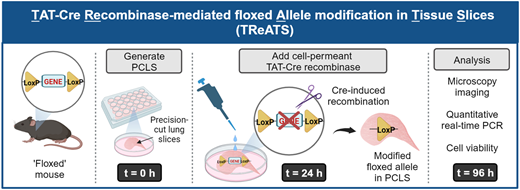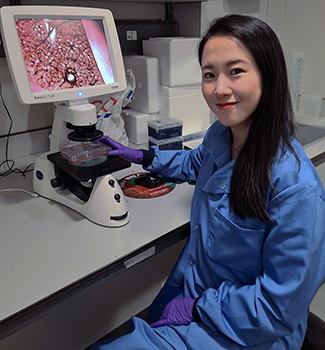Exciting news from our lab! We have just published a paper in Disease Models & Mechanisms detailing the ground-breaking TReATS (TAT-Cre Recombinase-mediated Floxed Allele Modification in Tissue Slices) method—a revolutionary approach to gene manipulation in precision-cut lung slices (PCLS).
PCLS have long been invaluable tools for researchers in respiratory research due to their versatility and physiological relevance. However, methods to manipulate genes in tissue slices remain limited.
Our TReATS method successfully induced highly effective and controlled gene deletion or activation in ex vivo 3D adult PCLS using cell-permeant TAT-Cre recombinase.

The significance of TReATS lies not only in its ability to induce highly effective and temporally controlled gene deletion or activation but also in its capacity to bypass the conventional hurdles of Cre-Lox breeding. This innovation allows researchers to circumvent issues related to embryonic lethality, and enables recombination across multiple cell types simultaneously in adult tissue slices.
The implications of this methodology are far-reaching. TReATS opens new avenues for accelerated and highly effective gene manipulation, facilitating the study of the functional consequences of genetic modifications in a controlled and reproducible ex vivo environment.
![]() Click here to read the full article
Click here to read the full article
As the first author of this article, Sek-Shir has been chosen for the first-person interview.

To explore her insights and responses to the interview questions, kindly follow this link: ![]() First-person interview
First-person interview
